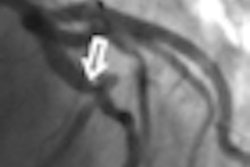Timely treatment at a dedicated pediatric trauma center can have a huge impact on the clinical outcome of a seriously injured child. So when a child is rushed to the nearest community hospital, should emergency physicians order CT scans if it is likely that the patient will be transferred?
Probably not, unless diagnostic images are needed to stabilize the patient, according to a report published in the July issue of Pediatric Emergency Care (2010, Vol. 26:7, pp. 481-486).
A study of transfer times of seriously injured children to the level I pediatric trauma center of Cincinnati Children's Hospital Medical Center from 41 community hospitals revealed that 82% of the patients failed to be transferred within the two-hour-of-injury timeline guideline recommended by the state of Ohio, and also that some delays were associated with the ordering of diagnostic imaging exams, specifically CT scans.
Emergency physicians conducted the study to understand the characteristics relating to children transferred to Cincinnati Children's pediatric trauma center, identify what types of patients have prolonged transport times, and analyze the reasons for the delays. Lead author Kaveer Chatoorgoon, MD, a pediatric surgery resident, and colleagues reviewed the medical records of all consecutive transferred trauma patients over a five-year period from 2002 through 2006.
During this time, a total of 2,931 patients were admitted, with 1,021 of the patients, or 34.8%, transferred from other hospitals. Of these, 273 patients were excluded from the study because they were older than age 16, were victims of nonaccidental trauma, or their records did not contain the time of injury.
The authors analyzed the records of 748 patients to determine whether differences in injury patterns, socioeconomic backgrounds, or lack of health insurance could be attributed to late transfers. Race and sex had no bearing on transfer time. But 11% more children who had health insurance coverage arrived outside the two-hour time window than the group of 136 who arrived within it.
The researchers found no pattern by originating hospital to account for patients who arrived in either group, nor did distance from the hospital make a difference. Arrival by air transportation was no indication of early arrival. In fact, 65% of the patients who arrived by air were in the late-arrival group.
Patients who arrived within two hours did have a slightly higher mean injury severity score (ISS) (11 versus 9.4), but had a slightly lower Glasgow coma scale (GCS) score (13.3 versus 14.5).
Impact of CT scans
However, what was significant was that more children from the group who arrived at the pediatric trauma center an average of six hours after injury had one or more CT scans. While almost half (43%) of the total number of transferred patients had CT exams performed, only 23% of the children who arrived early had these exams compared to 49% in the late-arrival group.
Almost half the children who had CT exams performed arrived at Cincinnati Children's Hospital Medical Center without either a DICOM CD or radiology reports, or the DICOM CD that accompanied them had suboptimal images. Of the children who had CT exams, 31% had to have the procedures repeated at Cincinnati Children's Hospital.
The authors also reported that the medical records of patients who had CT exams performed at the originating hospitals did not include indications for ordering the exams. They were unable to identify any association among vital signs, ISS scores, or GCS scores. The researchers suggest that this may reflect the inexperience of community hospitals in caring for severely injured children, and imaging may be ordered at these hospitals without clear indications of its need.
Not unexpectedly, health insurance coverage did make a difference with respect to having expensive diagnostic imaging procedures performed at the originating hospital: 48% of the patients covered by health insurance had a CT exam compared with 31% who did not have health insurance.
What happened next
When AuntMinnie.com asked Richard Falcone Jr., MD, Cincinnati Children's director of trauma services for the division of pediatric and thoracic surgery, what the hospital did with the findings, he noted in e-mail correspondence that the findings were shared with the referring hospitals and the study's sponsor, the Ohio Department of Public Safety.
Emergency physicians from the hospitals that responded to this information expressed surprise, according to Falcone. They stated that there were multiple reasons behind the delays in transfer. Some delays were attributed to arranging transport, while others admitted to general uncertainty in dealing with severely injured children.
CT scans were often ordered because parents expected a diagnosis to justify a hospital transfer and a full evaluation. Some requested that CT exams be performed at the originating hospital before they would authorize a transfer.
Cincinnati Children's Hospital has not formally analyzed patient transfer statistics since 2008, when the results of the analysis were reported, to see if awareness by the referring hospitals had an impact on reducing transfer time. Nor has the hospital evaluated if the percentage of CT exams performed has been reduced, or if the percentage of patients arriving with usable images and/or reports from CT scans performed at the originating hospitals has increased.
The Colorado experience
AuntMinnie.com talked with Kristine Hansen, RN, trauma burn program manager of Children's Hospital in Aurora, CO, to see if this situation was replicated in a predominantly rural state with a large percentage of small, rural community hospitals. Children's Hospital operates the only level I pediatric trauma center in Colorado.
"We have documented transfer times on 45% of the patients we received in 2009. The average transfer time for all of our patients that year was 2.6 hours, which I think is consistent with prior years," she said. "Hospitals throughout the state know that we are the most prepared to treat seriously injured children, and we think that their parents know this too." She said that when a local hospital recommends that a patient be transferred to Aurora, parents do not put up any resistance.
Almost all the children arrive with DICOM CDs that contain images of exceptionally high quality, which makes the trauma team speculate that the Image Gently radiation-reduction protocols recommended by the Alliance for Radiation Safety in Pediatric Imaging are not being used, Hansen said.
"The bigger hospitals in our system are using pediatric dosing with respect to CT exams, and we think that the large adult trauma centers are child-sizing radiation dose. But the culture of doing head-to-pelvis CT scans for both children and adults seems to be the norm in this state," she commented.
"Because the images from the exams are generally of very high quality, if a pediatric patient has been imaged, we don't reimage. We accept the images and go forward with treatment," Hansen said.
By Cynthia E. Keen
AuntMinnie.com staff writer
August 6, 2010
Related Reading
Pediatric CT settings should be adjusted to child's body size, May 25, 2010
Color-coded CT protocols help reduce pediatric radiation dose, June 4, 2009
SPR news: Rads must take lead in reducing pediatric CT dose, April 23, 2009
ARRS study: Child's body shape can reduce CT dose, April 23, 2009
Copyright © 2010 AuntMinnie.com



















